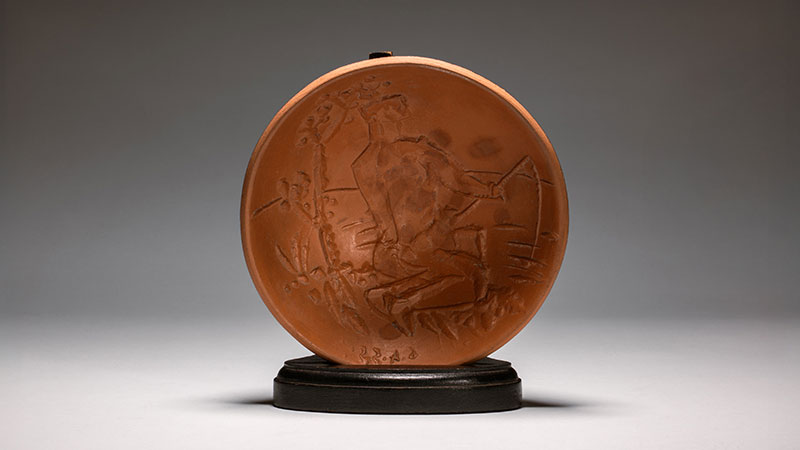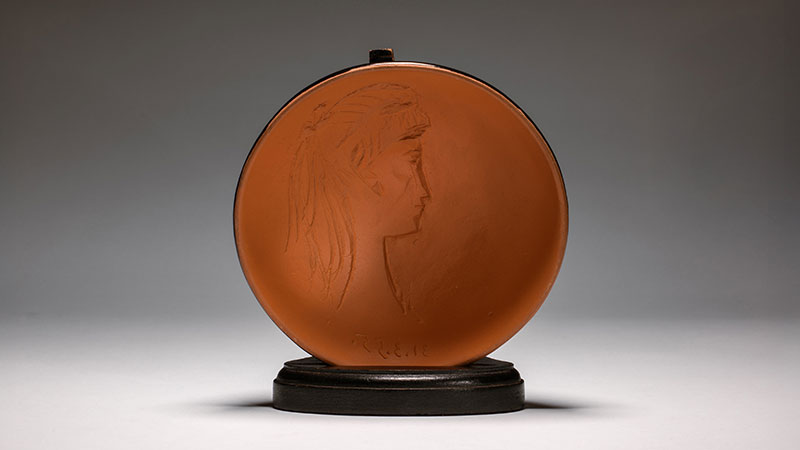How Much Are Picasso Ceramics Worth?
Picasso’s is a name almost synonymous with art itself
13/08/2025
Pablo Picasso is one of the most recognised artists in history. Most famous for his paintings and his creation of the cubist movement, Picasso’s is a name almost synonymous with art itself. Yet when it comes to his ceramics, much less is common knowledge, which is something of a surprise given both the scale of the ceramics Picasso created – well over 600 unique designs – and the fact that part of Picasso’s reasoning for creating his ceramics was to make them accessible and affordable for everyday people to have in their homes. When it comes to valuing these ceramics, there are a multitude of factors that must be considered. As with any antique, the condition of the piece will play a part, as well as things like the item’s aesthetic appeal – if it is pleasant to look at, chances are more people will be interested in owning it.
Pablo Picasso – Pêcheur À La Ligne
The first step in valuing a Picasso ceramic is to determine whether it is an original model piece, or a reproduction. The Spanish artist worked with Madoura Pottery, a pottery firm in a small town in the South of France from 1947 until 1971, creating 633 unique ceramic designs, that would then be replicated by the skilled workers. Each of these ceramics would then receive a limited commercial run of between 50 and 500 pieces. Obviously, the original models that Picasso himself designed (often referred to as Picasso Ceramic Originals) are much, much rarer than any replica that was made for sale – for that reason these are incredibly hard to come by and exceptionally valuable, with pieces previously selling at auction for over $1,000,000.
However, given there are so many designs that were created by Picasso and Madoura, there is also a lot of price variation between the different commercial releases. For instance, the early releases are much simpler than those that would follow. Picasso was effectively learning on the job, having very little experience with pottery before working with Madoura, and so began by creating objects like plates and bowls. The interesting parts of these pieces are often the designs they would feature, such as faces in his iconic cubist style. Later, Picasso created more complex items like vases, that would often incorporate things like facial features within the functional elements of them, such as the handle. These pieces are both charming but also ingenious, and as such they often fetch higher prices than some of the simpler items.
Pablo Picasso – Sylvette
Something to look out for when attempting to value any ceramic piece is a stamp or marking. All of Picasso’s pieces feature some sort of stamp. Depending on the piece, it may be on the underside, the reverse, or the inside of the piece – if your item does not contain a stamp or marking, there is a real risk that your item is not authentic. Given Picasso worked with Madoura for nearly 25 years, these markings also changed a lot over time, and it can be difficult to know if the marking on your piece is authentic, and we would always recommend contacting an expert. Here at Dawsons, our highly experienced team of Valuers can help determine whether your ceramic is genuine and will provide a complimentary auction valuation.
At the time, Picasso’s ceramics were seen by many to be inferior to his paintings, and as such were not a priority for most art collectors. Today, however, his ceramics are becoming increasingly popular. Some are on display at institutions like The Attenborough Collection in Leicester Museum and Art Gallery, and others have received their own dedicated exhibitions in places like Aubagne and Paris. Given that the ceramics were not coveted by many high-profile collectors, and are only ever getting older, it is likely that given rising interest, the prices of the pieces will also rise.
As with any artwork, the market can fluctuate, and you should always speak to an expert to get the best advice if you are considering selling any Picasso porcelain; our team at Dawsons are at your service and would be delighted to help you secure the best price.
Related Articles
What is the Most Expensive Martin Brothers Pottery?
A Guide to the Work of Edmund de Waal
What Does the Term Studio Pottery Mean?
Are you thinking of selling any Picasso ceramics?
With access to a huge global audience of known buyers and collectors, Dawsons can secure the best prices when you sell ceramics.
Please do get in touch if you'd like our experts to provide a complimentary valuation.
We would love to hear from you.
Call us on 0207 431 9445 or get in touch via email info@dawsonsauctions.co.uk.

